St. Bernards. Aren’t they adorable? Slobbering bundles of joy that get up to all sorts of mischief. This loveable breed of dog has certainly enjoyed its share of the Hollywood spotlight, therefore, there’s no other option but to discuss everyone’s favourite troublemaker. No, not Beethoven (Figure 1) I am, of course, talking about Cujo, family pet turned demon dog. (Figure 2)
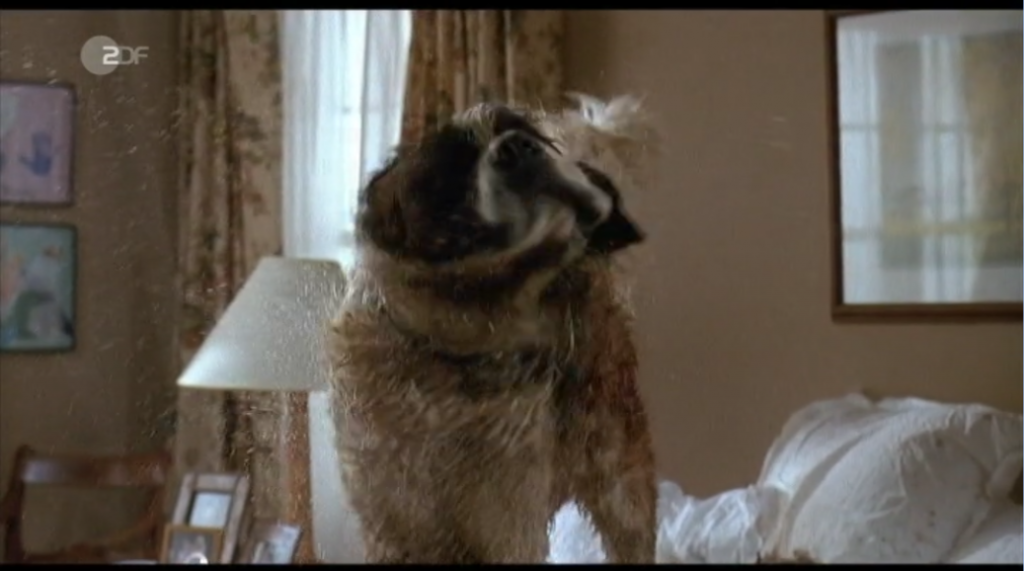
Figure 1 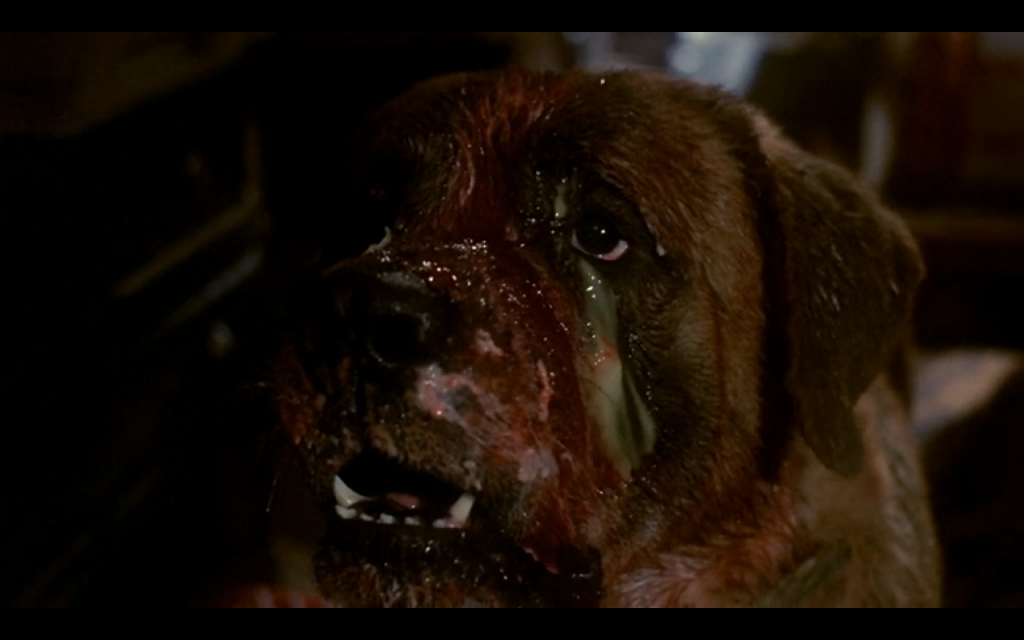
Figure 2
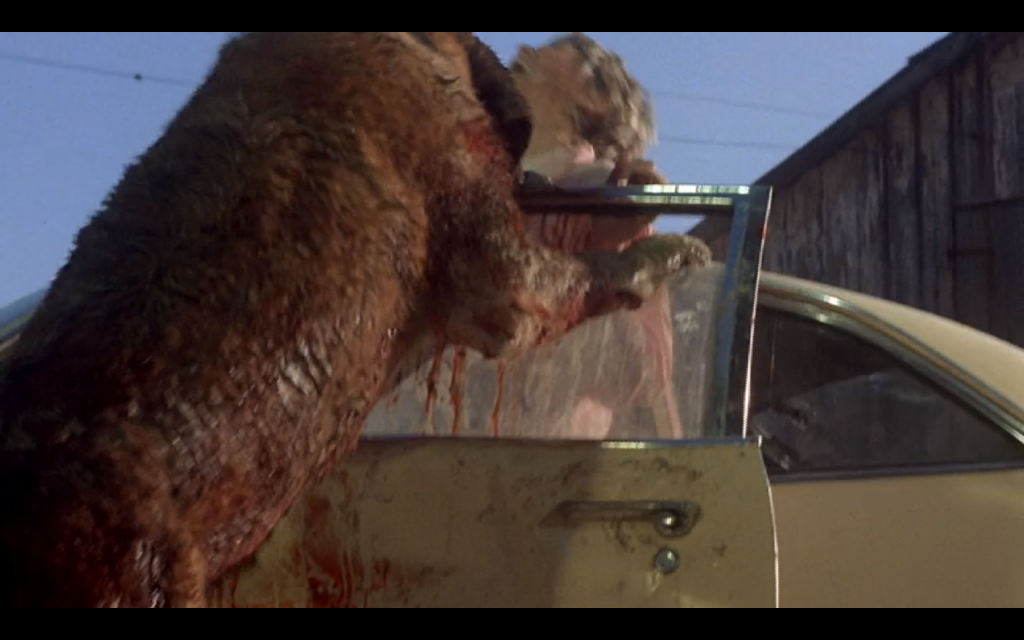
Cujo is an adaptation of Stephen King’s 1981 novel, directed by Lewis Teague, and released in 1983 to mixed reviews, the film could only be considered a modest success. However, in the years since its release it has achieved a cult following. The film follows Cujo’s descent in rabies induced ferocity. Opening in an idyllic scene we see Cujo happily chasing a rabbit around a field, the quintessential happy dog scene. Cujo chases the rabbit into a small cave and startles a group of sleeping bats. The bats respond to this rude awakening by biting our antagonist on the nose, infecting him with rabies (we just can’t seem to get away from those pesky bats!). Throughout the next forty minutes we see Cujo morph from lovely family pet to a dangerous killing beast, going on a rampage throughout the neighbourhood. On a fateful errand to Cujo’s owners place, stay-at-home mum Donna and her son Tad are terrorised by the rabid beast from the confines of their claustrophobic Ford Pinto. Culminating in a terrifying showdown with the rabid animal. (Figure 3)
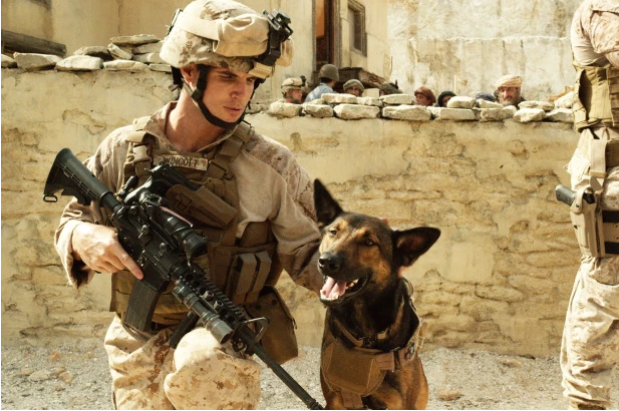
A quick search online for dogs in films will come back with a long list of family friendly films. Films such as Old Yeller (1957) with the heroic family dog to, Marley and Me (2008) and its mischievous yet loveable family pet ending in tragedy (seriously, bring tissues for this one), the story of heroic war dog Max (2015) (Figure 4) through to the adventures of animated dogs in The Secret Life of Pets (2016). It’s safe to say “Man’s best friend” has long been painted as the heroic, loyal family pet that we’ve all come to expect of dogs. In the case of Cujo we turn then to the horror genre. A genre where in more frequent times we might see the canine cast in a victim role, so common is the death of on-screen animals in horror films that fans are no longer impressed by this trope;
“Initially this whole trope was started simply for shock factor, but it’s gotten to a point where it’s no longer even shocking, hell, we expect it to happen. Show a cute pup on the screen and every seasoned horror fan will say: “Well, he’s going to die.”” [1]
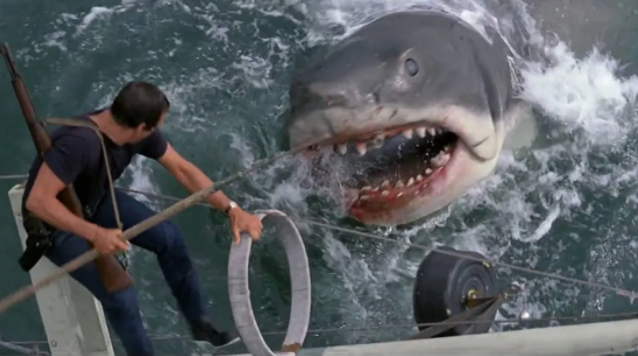
Cujo of course bucks this trend and joins the horror heavyweights such as Steven Spielberg’s Jaws (1975) (Figure 5) or Alfred Hitchcock’s The Birds (1963). The thing that sets Cujo apart however, is his association with that long list of Hollywood’s heroic dogs. In Cujo, King/Teague are not just playing on the scary creature chases family trope but they are also delving into the psychology of humans’ most loyal companion turning on them.
The opening shot of Cujo is an extreme close-up of a rabbit as it exits its burrow. (Figure 6) This rabbit while serving the purpose of leading Cujo to his ultimate demise also comes with some heavy symbolism and foreboding of what is to come for Donna and Tad. Rabbits often symbolise innocence which here Teague is clearly doing. In a relatively short film Teague uses the rabbit to give the audience an introduction to Cujo and show his true nature before he is affected by the rabies that will later take over him. The rabbit also reflects Donna in various ways. Interestingly rabbits are seen as a creature that, “enjoys the time in the lush field. He knows where the treasure is, it’s all around him and the fields are overflowing” a subplot of the story is Donna’s promiscuity and her unfaithfulness to her husband, after being stranded from her husband and nearly losing Tad to dehydration while isolated in their car by Cujo, Donna comes to realise the importance and value of the family surrounding her. This opening scene also shows that rabbits know “how to watch for danger and be prepared with a quick and safe escape” [2] This forebodes the situation that Donna and Tad find themselves in during the latter half of the film and how Donna ultimately manages to make an escape attempt. Cujo eventually chases the rabbit down a hole where his fate is sealed by the bats living in the cavernous hole. Here Teague not only sets up the cause of Cujo’s turn from loveable pet to savage beast, he also plays on the fear of rabies being transmitted by vampire bats. [3]
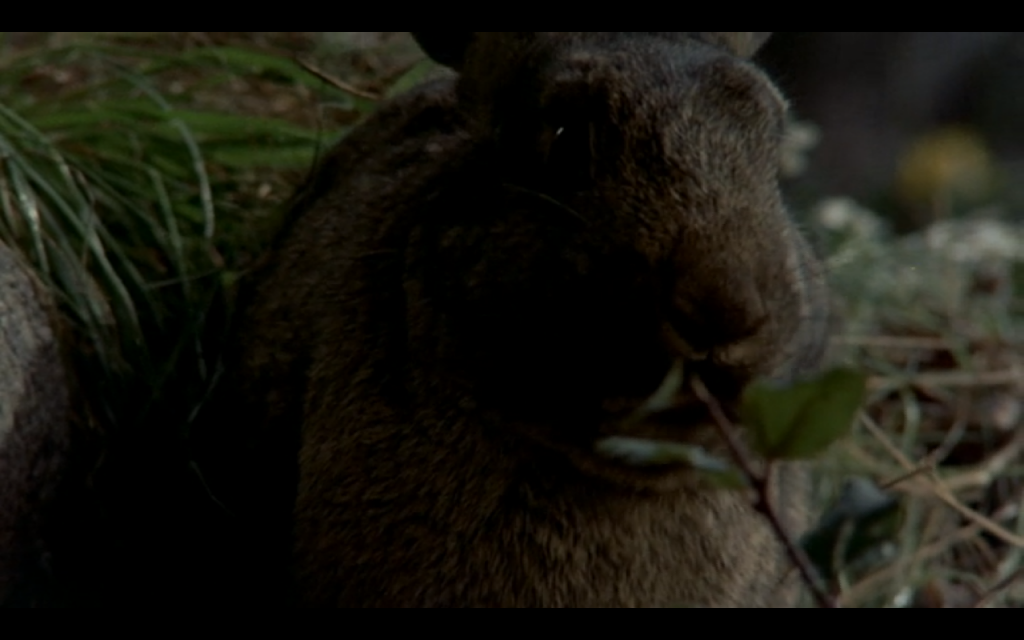
In a few key scenes we see the humans through Cujo’s eyes. The two noteworthy occasions are during Cujo’s descent into rabid insanity and during the final confrontation with Donna. When Cujo is not yet fully lost he sits by Mr Camber watching him sharing some beers with a friend the clattering of cans landing next to Cujo is heightened to give the viewer a sense of the dog’s suffering (sensitivity to sound is a known symptom of rabies). The next scene where we see through Cujo’s eyes is when he is fighting Donna during the climax of the film (Figure 7), the viewer has a first person view of Donna as she swings the bat at Cujo, upon connection the camera sways to give the impression that the viewer is taking the strikes with Cujo. Teague’s direction here reminds the viewer that while Cujo may be aggressive and capable of killing the humans around him, he is by no means the apex predator and is after all a family pet delving into insanity. Cujo’s tale is almost a complete reversal of that of the aforementioned Old Yeller. In King/Teague’s horror film we see Cujo go from the beloved family pet, this familial bond can be seen in the scene where the Trenton family visit the Camber’s to have their car looked at. We see Brett Camber hugging Cujo and telling Donna that “he’s safe” and that “Cujo won’t hurt him” as Donna protectively scoops Tad away. (Figure 8) to the rabid monster that kills several people and terrorises Donna and Tad, trapping them in their car over several days in the blistering heat. In Walt Disney’s Old Yeller a father leaves his eldest son, Travis, to look after farm and family while he goes on a cattle drive.Yeller, a golden Labrador from another farm, becomes part of the family and changes from being an untrustworthy thieving dog to faithful pet. Toward the end of the film in a heroic act, Yeler defends the family from a wolf attack, contracting rabies during his heroics and is ultimately euthanised in a heart-wrenching finale. [4] Being the subject of a horror film and that antagonist at that, Cujo is not afforded the heart-wrenching scene afforded to the disney representation of a rabid dog. Cujo instead is impaled by Donna and then unceremoniously shot as he makes his expected last ditch attempt at killing his prey.
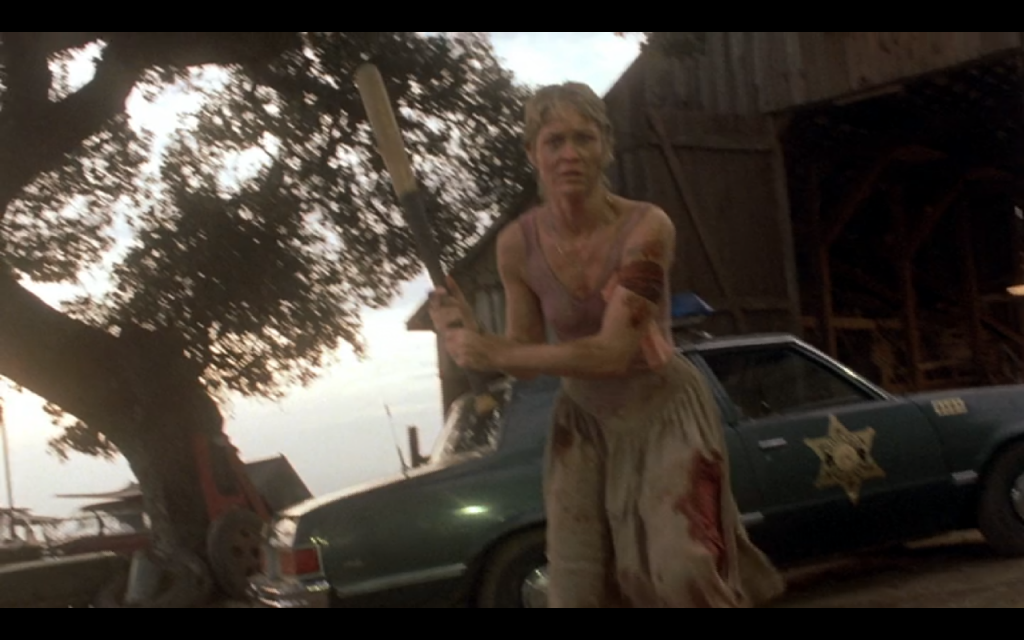
Figure 7 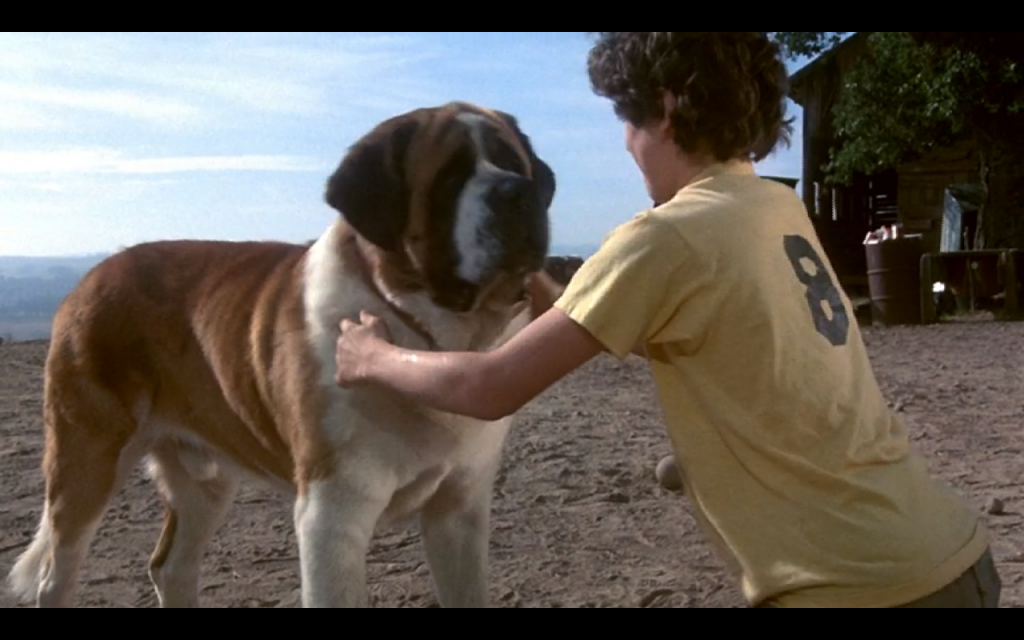
Figure 8
In Cujo, Teague is highlighting the fragility of the safety that exists between human and animal. In a film such as Jaws the predator is not a surprise to the viewer. A great white shark is a terrifying thing to behold in a mostly unknown environment. By having the antagonist be a dog Teague considers the question of whether anyone can say they are truly safe around what is after all an animal with its own instincts. As of 2017, there are almost 70 million dogs living amongst the people of the United States of America. The second largest pet population in the USA. While they live as beloved pets amongst families, Stephen King and Lewis Teague remind us that there is a thin line between domesticated and bestial wrath. Perhaps Teague’s reminders that Cujo is an animal that looks up at its human masters and can easily overcome most of its human prey serves to remind us that we are (without our tools and weapons) a relatively fragile species.
Bibliography
[4] Burt, Jonathan, Animals in Film (London: Reaktion Books, 2002),
[3] Lawrence, Elizabeth A. ‘The Sacred Bee, the Filthy Pig, and the Bat out Of Hell: Animal Symbolism as Cognitive Biophilia, in The Biophilia Hypothesis, ed. by Stephen R. Kellert (Washington: Island Press, 1993), pp, 301-340.
[2] Love, Presley, ‘Rabbit Symbolism’, Universe of Symbolism <https://www.universeofsymbolism.com/rabbit-symbolism.html> [accessed June 7 2020]
[1] Myford, Eric, ‘This Horror Movie Cliche Needs To Die – Killing Animals In Horror Movies’, Long Live the Void, 2019 <https://www.longlivethevoid.com/news/animaldeathem> [accessed June 1 2020]